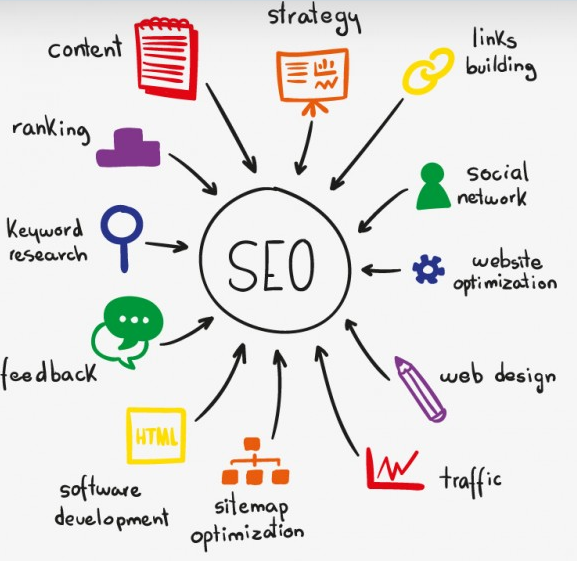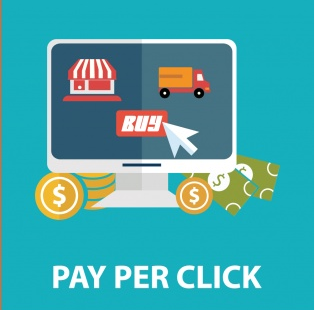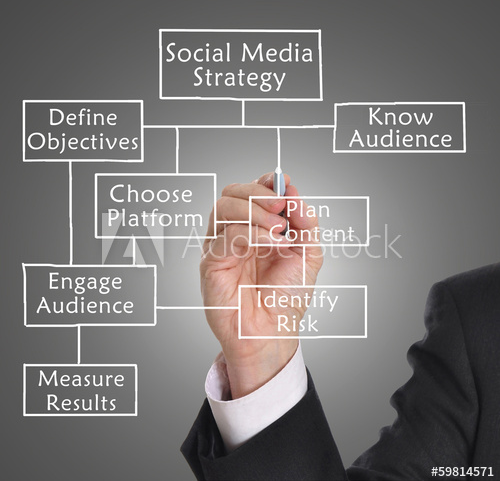The Various modules of digital marketing are
1. Search Engine Optimization (SEO)
2. Pay Per Clicks Marketing (PPC)
3. Social Media Marketing (SMM)
4. Social Media Optimization (SMO)
1. SEARCH ENGINE OPTIMIZATION (SEO)
The first one of various modules of digital marketing is Search engine optimization which most important for our website to stand in first page of google in order to get more views to our website
Search engine optimization (SEO) is the process of growing the quality and quantity of website traffic by increasing the visibility of a website or a web page to users of a web search engine.
SEO refers to the improvement of unpaid results (known as “natural” or “organic” results) and excludes direct traffic and the purchase of paid placement
Promoting a site to increase the number of backlinks, or inbound links, is another SEO tactic
2. PAY PER CLICK MARKETING
The second one of various module of digital marketing are pay per click marketing which is easy way to attract the customer for your product
Pay-per-click (PPC) is an internet advertising model used to drive traffic to websites, in which an advertiser pays a publisher (typically a search engine, website owner, or a network of websites) when the ad is clicked.
Pay-per-click is commonly associated with first-tier search engines (such as Google Ads, Amazon Advertising, and Microsoft Advertising formerly Bing Ads).
In contrast, content sites commonly charge a fixed price per click rather than use a bidding system.
Social networks such as Facebook, LinkedIn, Pinterest and Twitter have also adopted pay-per-click as one of their advertising models.
3. SOCIAL MEDIA MARKETING
Social media marketing is the use of social media platforms and websites to promote a product or service.
Although the terms e-marketing and digital marketing are still dominant in academia, social media marketing is becoming more popular for both practitioners and researchers.
Most social media platforms have built-in data analytics tools, enabling companies to track the progress, success, and engagement of ad campaigns. Companies address a range of stakeholders through social media marketing, including current and potential customers, current and potential employees, journalists, bloggers, and the general public.
On a strategic level, social media marketing includes the management of a marketing campaign, governance, setting the scope (e.g. more active or passive use) and the establishment of a firm’s desired social media “culture” and “tone.”
When using social media marketing, firms can allow customers and Internet users to post user-generated content (e.g., online comments, product reviews, etc.), also known as “earned media,” rather than use marketer-prepared advertising copy.
VARIOUS PLATFORMS OF SOCIAL MEDIA MARKETING
1. FACEBOOK
Facebook continues to be the reigning champ of social media sites, as the #1 spot where friends connect and share online.
More than just a meeting place for friends, Facebook has grown into a venue for businesses to market themselves through interaction with customers and self-promotion.
In this post we will be looking at seven ways you can use Facebook for marketing.
1. Making the Post on Your Facebook Business Page
A Facebook page is a great free marketing tool for businesses.
These pages let businesses identify themselves – not just through listing product offerings and services, but also by sharing links, images, and posts on a customization page to give a better sense of a business’s personality and character.
Your Facebook business page is a great spot to develop your brand identity and show your human side. Facebook is where you can loosen the tie a bit – don’t be afraid to be funny.
Ultimately you should consider what your key audience would want to see.
In addition to hilarious videos of dogs walking in tiny shoes, a store specializing in footwear might also post an article about how to measure your foot size accurately, what kind of shoe inserts are best for different sore feet woes, etc.
A nice mix of humor, educational resources, and posts about your store updates is ideal.
2. Facebook Advertising:
Facebook offers its own form of advertising with Facebook ads, which appear in the side columns of the Facebook site. These classic ads are referred to more specifically as Marketplace Ads.
They include a headline with copy, an image, and a click-through link to either a Facebook page, a Facebook app, or an outside website.
Facebook advertising features include:
- Demographic targeting by Facebook user data on age, location, education, and interests.
- The ability to set ad budgets.
- Ad testing, in which multiple ad versions can be run simultaneously in order to compare ad designs and setup.
- Built-in ad performance measurement tools.
Using Facebook advertising to increase your “Likes” can be very beneficial – once a user likes your page, they essentially become followers of your business page, and your posts will appear on their Facebook news feed.
4.Facebook Promoted Posts
Facebook Promoted Posts let Facebook page owners pay a flat rate in order to have their individual Facebook posts reach a certain number of users, increasing a specific post’s reach and impressions.
Some businesses have asked – why should I have to pay to ensure that my post is seen by users who are my followers? If a user has liked my page, they should always see my posts on their news feed, shouldn’t they? The answer to this question is no, because it assumes that users spend every waking moment of their life on Facebook’s news feed. For the health and safety of your Facebook fans, we hope this isn’t true!
If a fan of yours happens to be looking at their news feed when you post your story, they are likely to see it, but even then there is no guarantee if their news feed is swamped by other posts.
That’s where Promoted Posts comes in – it ups your chances of being seen on a user’s news feed. Facebook Promoted Posts are shown to existing fans, with an added option to reach friends of fans.
2. INSTAGRAM

Over 800 million monthly users are active on the site. More than 60 million photos are posted each day, and 1.6 billion daily “likes” are given.
There’s also a large number of influencers on the site with a massive amount of followers. And with the right plan, you can become an influential brand, too.
You need to post the right kind of content to stay relevant to current followers while also bringing in new ones.
But it can be hard to know which kinds of posts work best for growing your audience.
Here are ten powerful Instagram marketing tips (that actually work) that you can use to milk the popular platform for all that it’s worth.
First, you need to switch to a business profile
4. SOCIAL MEDIA OPTIMIZATION
Social media optimization (SMO) is the use of a number of outlets and communities to generate publicity to increase the awareness of a product, service brand or event.
Types of social media involved include RSS feeds, social news and bookmarking sites, as well as social networking sites, such as Facebook, Instagram, Twitter, video sharing websites and blogging sites.
SMO is similar to search engine optimization, in that the goal is to generate web traffic and increase awareness for a website.
In general, social media optimization refers to optimizing a website and its content to encourage more users to use and share links to the website across social media and networking sites.
SMO also refers to software tools that automate this process, or to website experts who undertake this process for clients.
The goal of SMO is to strategically create interesting online content, ranging from well-written text to eye-catching digital photos or video clips that encourages and entices people to engage with a website and then share this content, via its web link, with their social media contacts and friends.
Social media optimization is also an effective way of implementing online reputation management (ORM), meaning that if someone posts bad reviews of a business, a SMO strategy can ensure that the negative feedback is not the first link to come up in a list of search engine results.
In the 2010s, with social media sites overtaking TV as a source for news for young people, news organisations have become increasingly reliant on social media platforms for generating web traffic.








